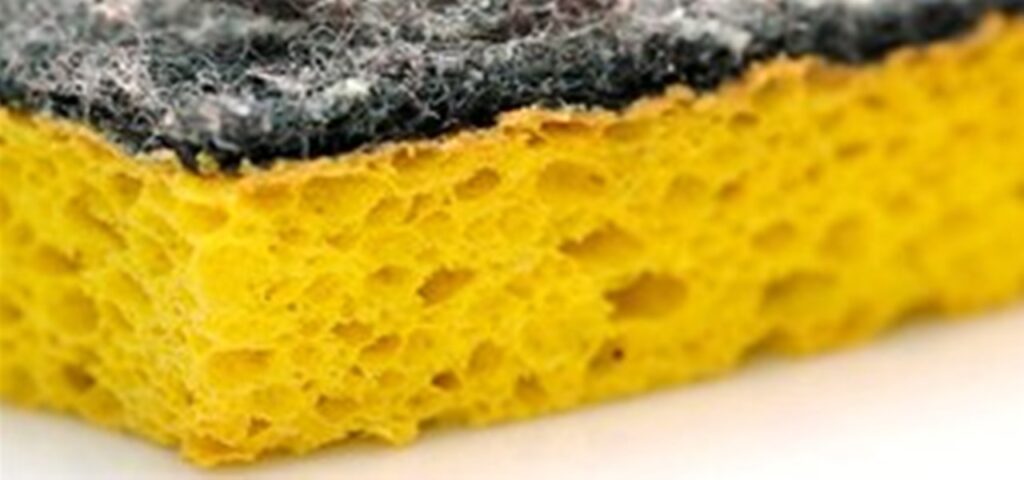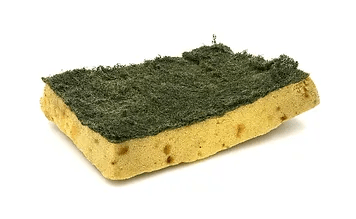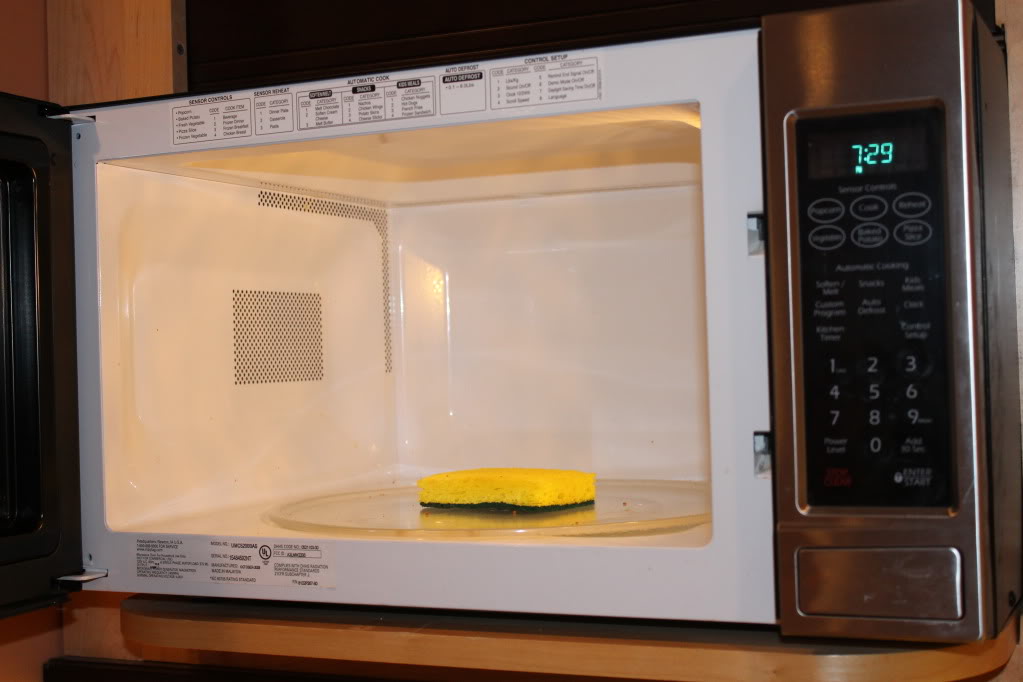About Sponges
Normal sponges are gross
Kitchen Sponges are the Perfect Environment for Bacteria Growth
If you wanted to create a perfect environment to grow bacteria, you could not do any better than a kitchen sponge. Sponges are kept in a warm kitchen and filled with moist pores that are packed with food particles. It is a bacterium’s dream.

Normal Kitchen Sponges
Surprisingly, the room with the most bacteria in your home is not the bathroom. It is actually the kitchen due to the presence of food and food particles.
The densest concentration of bacteria in the kitchen is not the counters, the floor or the sink. The densest concentration of bacteria is actually on the kitchen sponge which unfortunately is the tool most people use to clean their dishes.

In a 2017 university study published in Scientific Reports, researchers analyzed the germs in kitchen sponges with findings that actually shocked the research team*.
Not only were there 362 bacteria types, the bacteria were in unbelievable concentrations. The analysis showed there were 82 billion bacteria in 1 cubic inch of sponge. That means there are approximately 5.5 trillion microorganisms crawling around in the average sponge people use to “clean” dishes.
The lead researcher was quoted to say this is “…the same density of bacteria you can find in human stool samples. There are probably no other places on earth with such high bacterial densities.”
Microwaving sponges kills the weak and makes the dangerous bacteria stronger!
Another finding from the 2017 university study was that microwaving sponges kills good bacteria and increases dangerous bacteria*. The researchers confirmed this phenomenon in a new study in 2020. Honestly, results of that study are frightening.
Over a four week period, the researchers asked 10 people to use a sponge normally for cleaning dishes. Another group of 10 people were asked to use sponges and “sterilize” them two to three times per week. This group was told to sterilize the sponges by soaking them in dish detergent and then microwaving them for one minute at the highest setting.
After four weeks, the sponges from both groups were analyzed.
The microwaved sponges indeed had less bacteria than the normal sponges, however the microwaved sponges had significantly more dangerous bacteria. And (no exaggeration) this bacteria is some of the most dangerous to human life.
The bacteria found were Acinetobacter and Pseudomonas. Both are resistant to many drugs and are able to become resistant to virtually any antimicrobial agent*.
*Egert, et al. Metagenomic Analysis of Regularly Microwave-Treated and Untreated Domestic Kitchen Sponges Microorganisms. May 2020 Learn More
*Gales, et al. Multidrug-resistant Pseudomonas aeruginosa and Acinetobacter baumannii: resistance mechanisms and implications for therapy Expert Review of Anti-infective Therapy. Volume 8, 2010 Learn More

Sponge Biodegradability
Dispongeables are 100% Biodegradable and Compostable
Dispongeables are made of cellulose which is the skeleton of plants and have been shown to biodegrade in about three months. For this reason, many of our customers prefer to compost Dispongeables instead of throwing them in the garbage.
Unfortunately, it is uncommon for cellulose sponges to be recycled. One of our company goals is to make recycling companies aware of cellulose sponges and to have recycling available for these sponges nationwide.

Synthetic Sponges
Synthetic Sponges are Bad for the Planet
The huge sponge manufacturers love synthetic plastic sponges because they are cheap to manufacture and can be shaped and dyed to charge a higher price.
Customers will pay more for these fancy sponges because of their special shapes and colors.
Unfortunately, synthetic sponges cannot be recycled and will take decades or centuries to degrade in a landfill. During their prolonged degradation, they will most likely release dioxins and formaldehyde into the soil.

Synthetic sponges are made of polyurethane or polyesters and scientific studies have found the following about these materials:
- “polyurethane foams…visible consequences of degradation can appear after 20–30 years of natural degradation.”*
- “The majority of polyesters are not biodegradable meaning (they) will not decompose for 20 years at best and 200 years at worst”*
